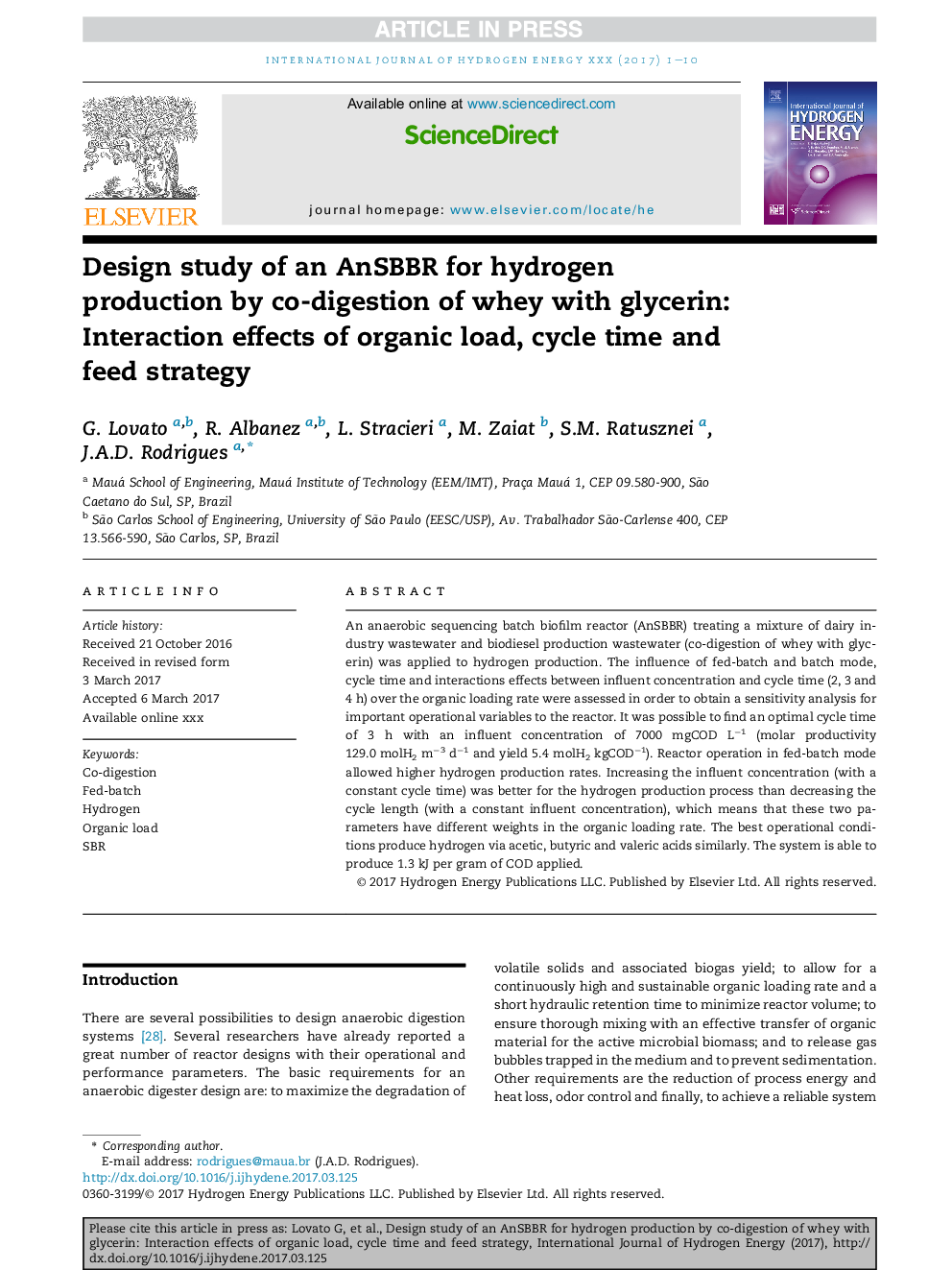| Article ID | Journal | Published Year | Pages | File Type |
|---|---|---|---|---|
| 5147932 | International Journal of Hydrogen Energy | 2017 | 10 Pages |
Abstract
An anaerobic sequencing batch biofilm reactor (AnSBBR) treating a mixture of dairy industry wastewater and biodiesel production wastewater (co-digestion of whey with glycerin) was applied to hydrogen production. The influence of fed-batch and batch mode, cycle time and interactions effects between influent concentration and cycle time (2, 3 and 4Â h) over the organic loading rate were assessed in order to obtain a sensitivity analysis for important operational variables to the reactor. It was possible to find an optimal cycle time of 3Â h with an influent concentration of 7000Â mgCODÂ Lâ1 (molar productivity 129.0Â molH2Â mâ3Â dâ1 and yield 5.4Â molH2Â kgCODâ1). Reactor operation in fed-batch mode allowed higher hydrogen production rates. Increasing the influent concentration (with a constant cycle time) was better for the hydrogen production process than decreasing the cycle length (with a constant influent concentration), which means that these two parameters have different weights in the organic loading rate. The best operational conditions produce hydrogen via acetic, butyric and valeric acids similarly. The system is able to produce 1.3Â kJ per gram of COD applied.
Related Topics
Physical Sciences and Engineering
Chemistry
Electrochemistry
Authors
G. Lovato, R. Albanez, L. Stracieri, M. Zaiat, S.M. Ratusznei, J.A.D. Rodrigues,
